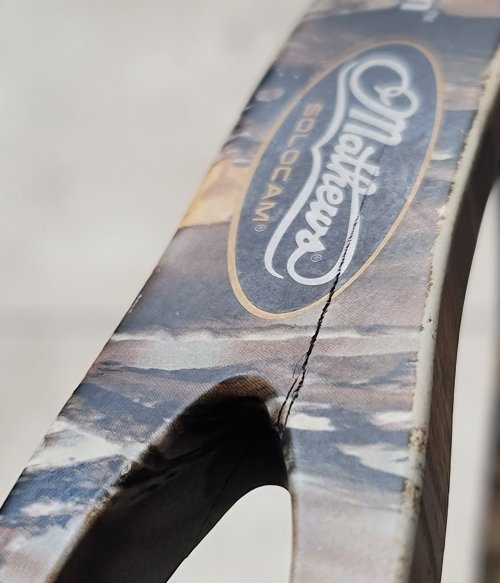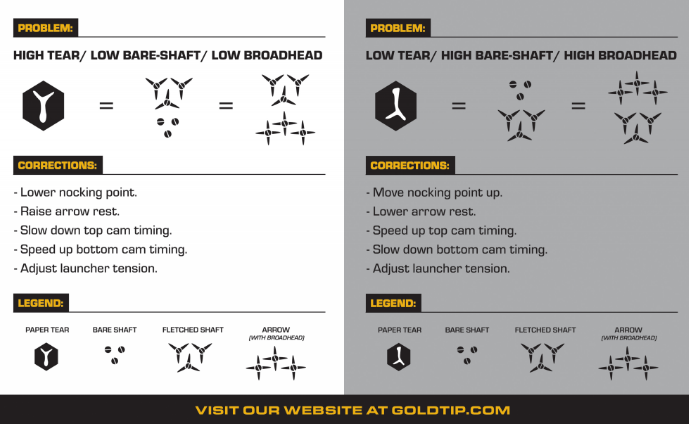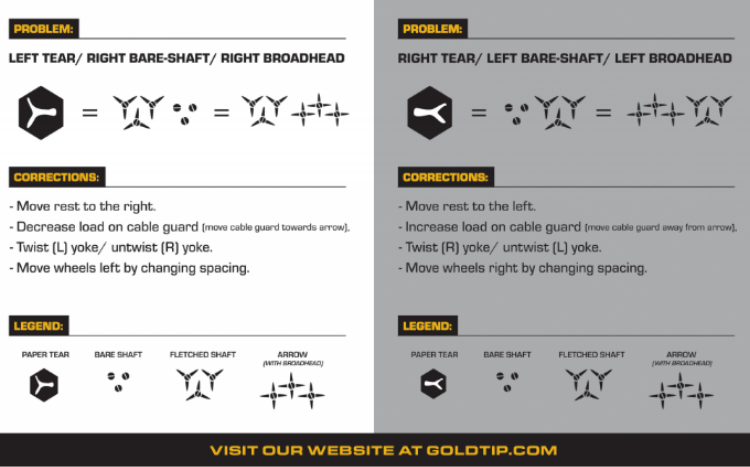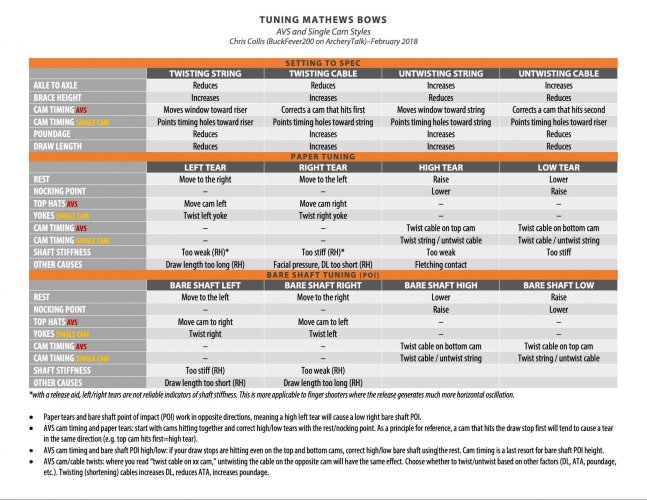Currently shooting a mathews switchback LD and would say I shoot it pretty darn well..most days. I have days where I shoot lights out out to 80+ yds and other days leave me wondering what the heck I'm doing wrong. I know it's most likely me and not the bow. I could however stand to learn whole lot more about tuning though..I have been kicking around the idea of retiring the switchback and pulling the trigger on the new mathews lift but would like to hear others thoughts on it and just new bows in general. Is it really worth it? I'm I going to be razzeled and dazzled by the latest and greatest bows? Or will I be wishing I'd have spent the money on some really good binos? It will be hard for me to let go of the old bow, have had some great hunts with it and put down some some nice critters.
Navigation
Install the app
How to install the app on iOS
Follow along with the video below to see how to install our site as a web app on your home screen.
Note: This feature may not be available in some browsers.
More options
You are using an out of date browser. It may not display this or other websites correctly.
You should upgrade or use an alternative browser.
You should upgrade or use an alternative browser.
Retire the switchback?
- Thread starter NDcoyote
- Start date
Joe Hulburt
Well-known member
I'm in the same boat. My current bow is coming up on 9 years old (which is hard to believe!) and I can shoot it well if I have been shooting consistently and I'm shooting target tips. Once I switch to broadheads any little change in form and things go to heck. I would like to find a bow that is more forgiving even if it means slower. It seems like it's a matter of compromise and I think I have focused too much on speed in the past. I've never owned a Mathews but also have never been brand specific and the Lift is one I am curious to shoot and wondering if people that shoot it would say it's forgiving.
New bows are a terrible investment and not one I like to make any more often than necessary.
New bows are a terrible investment and not one I like to make any more often than necessary.
bmt99
Active member
I had a switchback that I sold and I keep in touch with the guy who bought it in case he sells it and I can buy it back. I have a newer Mathews (2 years old) and love it. It is definitely quieter and faster but I did love the simplicity and great shooting switchback. Definitely buying it back when/if he decides to sell it.
Personally, I would look into a used 1-3 year old bow. My brother in law just bought a Mathews Phase and claims it holds nicer than his old bow and is more accurate with it. But believing it will shoot better, probably helps it shoot better. Positive attitude makes a world of difference.
EDIT: Definitely what @Wild Bill says on "If you go and shoot a new bow, you're decision will be made for you."
Personally, I would look into a used 1-3 year old bow. My brother in law just bought a Mathews Phase and claims it holds nicer than his old bow and is more accurate with it. But believing it will shoot better, probably helps it shoot better. Positive attitude makes a world of difference.
EDIT: Definitely what @Wild Bill says on "If you go and shoot a new bow, you're decision will be made for you."
I started out with a Drenalin and a few years ago upgraded to a Chill R. For me the pros are pretty even with the cons. I had that Drenalin tuned perfect and it would punch bullet holes when paper tuned. The new one not so much. Maybe I need a better shop but generally speaking the dual limbs seem to be harder to tune. It also seems to be easier to apply torque when shooting the new bow. But it is faster and seems to be a little quieter.
Mighty Mouse
Active member
- Joined
- Feb 16, 2022
- Messages
- 114
You would likely be surprised by how much harder it feels to draw a Lift compared to your Switchback LD (at the same draw weight). Comparatively speaking, the draw cycle will start sooner and climb/fall more steeply, which often gets described as "harsh," stiff," and "jumpy." Modern hunting bows have more aggressive cams and shorter brace heights, which requires the shooter to do more more work while drawing the bow. The upside is that these newer bows are much faster. You would gain 40+ fps by switching to a Lift (or similar modern bow) at the same draw weight/length and arrow weight. Speed isn't everything, but it does create a flatter trajectory and helps compensate for errors in range estimation. Accuracy is still king though; a fast bow you can't shoot well is inferior to a slow one that you can.
Newer bows aren't really any better or worse than your Switchback in terms of tuning, just different. Instead of twisting yokes to adjust cam lean, newer Mathews use spacers ("top hats") on the cam axles. Newer Bowtechs and Elites do have a pretty nifty means of adjusting cam lean without putting the bow in a press, but they still require a press for cam timing. A lot of the bells and whistles on newer bows (e.g., Bridgelock slots, Picatinny rails) are marginally useful (at best) and primarily designed to entice you to buy expensive compatible accessories.
Whether you get a new bow or not, I would recommend keeping the Switchback. You might be able to get $200-300 out of it, but I would just keep it as a backup. Keep an eye out for limb cracks though. Those old solid limb bows can eventually develop a crack where the limb forks around the cam (see photo for example). Replacement limbs are still available through a Mathews dealer but probably cost more than the bow is worth (unless you're the original owner and covered by lifetime warranty).

Newer bows aren't really any better or worse than your Switchback in terms of tuning, just different. Instead of twisting yokes to adjust cam lean, newer Mathews use spacers ("top hats") on the cam axles. Newer Bowtechs and Elites do have a pretty nifty means of adjusting cam lean without putting the bow in a press, but they still require a press for cam timing. A lot of the bells and whistles on newer bows (e.g., Bridgelock slots, Picatinny rails) are marginally useful (at best) and primarily designed to entice you to buy expensive compatible accessories.
Whether you get a new bow or not, I would recommend keeping the Switchback. You might be able to get $200-300 out of it, but I would just keep it as a backup. Keep an eye out for limb cracks though. Those old solid limb bows can eventually develop a crack where the limb forks around the cam (see photo for example). Replacement limbs are still available through a Mathews dealer but probably cost more than the bow is worth (unless you're the original owner and covered by lifetime warranty).

KB_
Well-known member
New bows are cool.... But the Matthews Chill and Elite Synergy were 10 year investments when I got them and frankly I like them too much still, so ill keep going another 10 years and see if I feel the itch for a new bow then.
I know when I bought my bows I tried a bunch of models out and had probably 7-8 different bows over a two year period trying to find one I really like. Well I ended up finding two that work for me and I'm pretty happy. Black gold sight and a simple fall away rest, they just work and give me no problems.
I know when I bought my bows I tried a bunch of models out and had probably 7-8 different bows over a two year period trying to find one I really like. Well I ended up finding two that work for me and I'm pretty happy. Black gold sight and a simple fall away rest, they just work and give me no problems.
The switchback does have new limbs, replaced by mathews at no cost to me . So she's got a lot of life left in her! We'll see how I'm feeling come spring..might go bow shopping or might not. Either way the switchback will never be sold. Just had too many good hunts with it to see it go down the road. I will however get serious about tuning and learn more about that. Will keep you guys posted!
3855WIN
Well-known member
I went from Switchback to SV3 this year. Nice bow. I killed four does with it.
elevatorman
Active member
It could very well be your bow. I had a bowtech assassin that was 12 years old. Last year it fought me absolutely ridiculously. One day I'd shoot tight Groups to 60. Another day all arrows would go right. Adjust sight. Next day arrows still went right. Adjust sight. Then they'd be good. Then left. Etc. The bow moved like every time I used it. I checked everything possible. I was so frustrated I was starting to see why guys use crossbows. I couldn't find anything wrong with the bow. Newer strings. But it refused to be consistent. Now mind you I'd shot great with this bow for 11 years.
This year my wife suprised me with a new bow. I am shooting lights out with it. The bow is very accurate. Way more accurate than I can possibly shoot it. Now I moved my rest and sight over and used same arrows from last year.
My point is, it absolutely can be your old bow. I'm not a guru, but my guess would be a limb starting to have internal issues, a pivot pin or bearing failing etc. Worn out parts with too much play.
The new bows are very nice. Go to a dealer that has at least hoyt, Matthew's, and bowtech and shoot all of them. I walked in thinking I was gonna get a mathews and walked out carrying a new bowtech. Shot both side by side for over 30 minutes. You can probably get a good deal on 2023 models now
This year my wife suprised me with a new bow. I am shooting lights out with it. The bow is very accurate. Way more accurate than I can possibly shoot it. Now I moved my rest and sight over and used same arrows from last year.
My point is, it absolutely can be your old bow. I'm not a guru, but my guess would be a limb starting to have internal issues, a pivot pin or bearing failing etc. Worn out parts with too much play.
The new bows are very nice. Go to a dealer that has at least hoyt, Matthew's, and bowtech and shoot all of them. I walked in thinking I was gonna get a mathews and walked out carrying a new bowtech. Shot both side by side for over 30 minutes. You can probably get a good deal on 2023 models now
I've been shooting a Chill XR for the last 6 or 7 years and I'm afraid to go shoot one of those new bowtechs.. Shot my cousins a couple years ago and had to give my credit card to my wife for a couple days until the urge wore off. They're making some nice bows.It could very well be your bow. I had a bowtech assassin that was 12 years old. Last year it fought me absolutely ridiculously. One day I'd shoot tight Groups to 60. Another day all arrows would go right. Adjust sight. Next day arrows still went right. Adjust sight. Then they'd be good. Then left. Etc. The bow moved like every time I used it. I checked everything possible. I was so frustrated I was starting to see why guys use crossbows. I couldn't find anything wrong with the bow. Newer strings. But it refused to be consistent. Now mind you I'd shot great with this bow for 11 years.
This year my wife suprised me with a new bow. I am shooting lights out with it. The bow is very accurate. Way more accurate than I can possibly shoot it. Now I moved my rest and sight over and used same arrows from last year.
My point is, it absolutely can be your old bow. I'm not a guru, but my guess would be a limb starting to have internal issues, a pivot pin or bearing failing etc. Worn out parts with too much play.
The new bows are very nice. Go to a dealer that has at least hoyt, Matthew's, and bowtech and shoot all of them. I walked in thinking I was gonna get a mathews and walked out carrying a new bowtech. Shot both side by side for over 30 minutes. You can probably get a good deal on 2023 models now
IMO, no, it is not worth it. Most likely your old bow is fine. In most cases, it is the archer, not the bow. Replace the strings and cables every couple of years to avoid stretch-related issues. When getting the strings/cables replaced, check the axles, cams, rest, and limbs for any issues. These are fairly simple machines with few components. There are common issues that cause inconsistent arrow flight (string stretch, incorrect timing, drop-away rest not dropping out of the way, etc.) Compare the speed and specs of your current bow to the new bows, and there is minimal changes or improvments. I have shot the same bow for 15 seasons now. And not ONCE, in any of those seasons, would having the "latest and greatest" bow would have made one difference in my overall season or outcome of "punching a tag". Even if I would have purchased a brand new bow before every season, the overall outcome of any hunt would not have changed one bit. (NB: My perspective is from that of a hunter, not a target shooter, so YMMV.)Currently shooting a mathews switchback LD and would say I shoot it pretty darn well..most days. I have days where I shoot lights out out to 80+ yds and other days leave me wondering what the heck I'm doing wrong. I know it's most likely me and not the bow. I could however stand to learn whole lot more about tuning though..I have been kicking around the idea of retiring the switchback and pulling the trigger on the new mathews lift but would like to hear others thoughts on it and just new bows in general. Is it really worth it? I'm I going to be razzeled and dazzled by the latest and greatest bows? Or will I be wishing I'd have spent the money on some really good binos? It will be hard for me to let go of the old bow, have had some great hunts with it and put down some some nice critters.
Mighty Mouse
Active member
- Joined
- Feb 16, 2022
- Messages
- 114
Tuning isn't as complicated/mysterious as it's sometimes made out to be. The basic idea is to get the "powerstroke" of the bow (i.e., the path traveled by the point on the string where the arrow is nocked) aligned with the rest. Since we can't watch/measure the string path during the shot, we have to infer how the string is moving relative to the rest by observing how the arrow behaves. Paper tuning, bareshaft tuning, and broadhead tuning are all ways to assess alignment between the string path and rest. These three tuning techniques vary in procedure but should lead to the same end result.I will however get serious about tuning and learn more about that.
- Paper tuning
- Procedure: Shoot a fletched arrow with field point through a sheet of paper at very close range (≈5-6 ft) then study the shape of the tear made through the paper. Repeat at a slightly longer range (≈15-16 ft).
- Theory: The tear indicates the angle at which the arrow was flying at the instant it passed through the paper. This must be done at very close range before the fletching has a chance to straighten the arrow's flight.
- Goal: Symmetrical tear consisting of a circular hole centered amongst the linear tears made by the fletching (often referred to as a "bullet hole" tear). A bullet hole tear indicates that the arrow was flying perpendicular to the paper when it passed through, implying that the arrow left the bow flying straight.
- Adjustments: See charts below.
- Caveats: Paper tuning is good for initially getting things in the ballpark but isn't always a reliable indicator of satisfactory tune at hunting distances. Sometimes paper tears can be deceiving.
- Bareshaft tuning
- Procedure: Shoot a field point-tipped bareshaft (arrow with no fletching) followed by a field point-tipped fletched shaft into a target at close-medium range (start at 10-20 yds then work back as your shooting ability allows). Aim for the same spot with each arrow then compare their relative points of impact.
- Theory: A bareshaft will continue flying at its initial launch angle all the way to the target because it has no fletching to straighten it out.
- Goal: Bareshaft and fletched shaft hitting the same spot (within your shooting ability). Same POI indicates that the string path and rest are in good alignment and that both the bareshaft and fletched shaft are being launched straight.
- Caveats: Bareshafts are very sensitive to shooting form. If you can't get a consistent bareshaft group, move closer and work on form consistency.
- Broadhead tuning
- Procedure: Shoot a broadhead-tipped fletched arrow followed by a field point-tipped fletched arrow into a target (start close then work back to your maximum effective hunting range). Aim for the same spot with each arrow then compare their relative points of impact.
- Theory: A broadhead-tipped arrow is harder/slower to straighten out than a field point-tipped arrow due to the larger surface area of the broadhead. This will manifest as different POI's if both arrows are launched askew.
- Goal: Broadhead and field point hitting the same spot (within your shooting ability). Same POI indicates that the string path and rest are in good alignment and that the arrow is being launched straight.
- Adjustments: See charts below.
- Caveats: If you shoot far enough, broadheads will eventually hit lower than field points even if the bow is in tune (because broadheads induce more drag). If you reach yardages at which the vertical POI difference is significant, you have to decide to adjust your sight for either broadheads or field points at those longer ranges. Tuning becomes more difficult as the amount of exposed broadhead surface area increases. If you've tried everything else and still can't get a satisfactory broadhead tune, either try a smaller head or try more/taller/longer fletching.


Note that not all the adjustments listed on the Gold Tip charts above apply to every bow. Your Switchback doesn't have shim-able wheels/cams, an adjustable cable guard, or two cams to keep in time. Vertical tuning options on a Switchback are rest elevation and nocking point height. Horizontal tuning options are rest windage and yoke twists on the idler wheel (upper "cam"). When adjusting yokes, add/remove the same number of twists to/from each leg (e.g., if you add two twists to the left leg, also remove two twists from the right leg) to keep the overall cable length unchanged.
Before tuning, it's a good idea to set your bow to the manufacturer's specs on draw weight, draw length, axle-to-axle length, brace height, cam timing, and rest position. DW, DL, ATA, BH, and cam timing are all a function of string and cable lengths and can be fine tuned by adding or removing string/cable twists. The chart below shows how twists affect various parameters. Setting to spec should be done with both limb bolts fully tightened (loosen them afterward if you want to reduce draw weight). Initial rest windage should be set to 13/16" centershot (horizontal distance from inside of riser to centerline of arrow). Initial rest elevation should be set such that the arrow runs perpendicular to the string through the middle of the Berger hole (threaded hole in riser used to attach rest).

Last edited:
Forkyfinder
Well-known member
- Joined
- Dec 13, 2023
- Messages
- 3,816
If your draw is long - Id suggest a taller bow. I have a 29 inch draw and went from a 30" mathews creed to a 35" prime rival and the additional height and improved string angle made a big difference to me.
Northwoods
Well-known member
Until this spring I had always bought used bows. I said that I would never buy a new flagship bow. I went to purchase a new bow this spring, again I told myself no flagship bows. After shooting several new bows, some of which I liked and some of which I didn’t like, I walked out of the shop with a new Mathews Phase4. I had zero buyers remorse. It’s so quiet and smooth compared to the Chill that I had been shooting. A new bow is really nice if you can find that perfect fit.
blackbeard
Well-known member
If you're shooting that good with it why change, do some strings and a tune up job and then by some nice binos.
Elkhntr50
Member
- Joined
- Jan 19, 2024
- Messages
- 22
Levi Morgan recently made a video where he bought a switchback off eBay and killed a nice buck with it. I believe the only negative comment was it was a little slow. Other than that, it seemed to kill the buck just fine.
I would say stick with the switchback. Those came out when I was just getting into archery and I have very found memories of that style of bow and the technology at that time.
I would say stick with the switchback. Those came out when I was just getting into archery and I have very found memories of that style of bow and the technology at that time.
I have heard the words “I should never have gotten rid of it” said about the Switchback more than all other bows combined. Here in Wisconsin, that was THE bow for a while.
I’m not a Mathews guy, but they hit a home run with that one. I’d hang onto it as a backup for sure.
I’m not a Mathews guy, but they hit a home run with that one. I’d hang onto it as a backup for sure.
I was in the same boat as you several years ago. My Switchback LD just felt old and I was losing confidence with it. Tried new rest, sights, stabilizer, arrows, etc but couldn't get the "feel" back. Bought an Elite Impulse 34. Didn't like it. Tried a Hoyt Carbon. Didn't feel right after a few months. Tried a Mathews Halon, same result. After about 2 years went back to shooting the Switchback LD(thankfully never sold it) and love it again! What helped me was getting back to basics/simplifying-like the whisker biscuit, 7 pin sight, and a small stabilizer. Slower than the others but smooth and simple.
Similar threads
- Replies
- 4
- Views
- 528
Latest posts
-
Colorado draft big game license recommendations
- Latest: BrokenChicken
-
-
-
-




